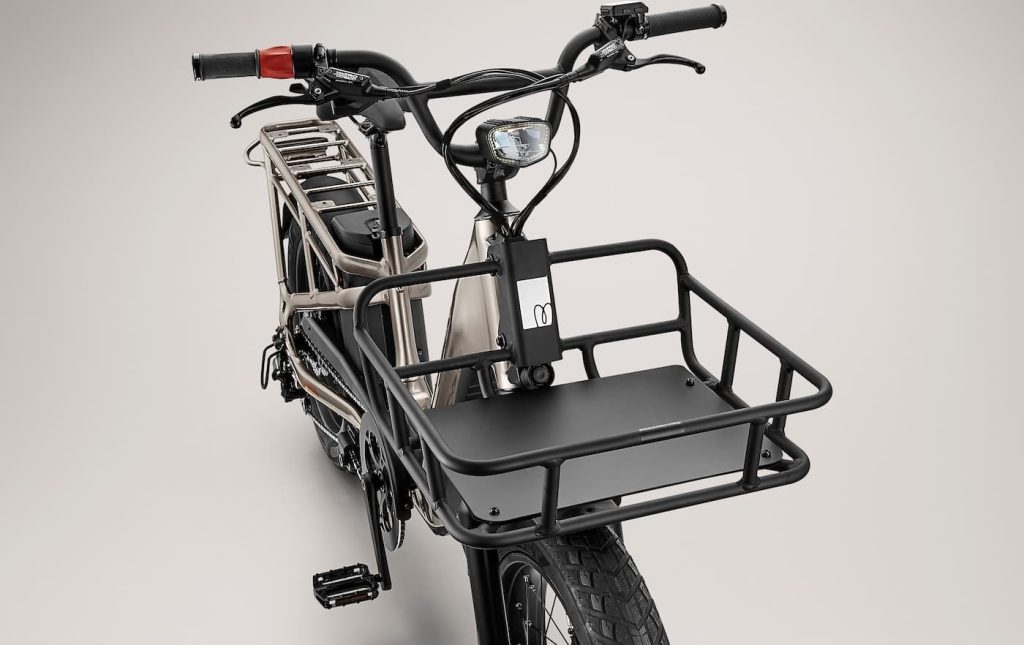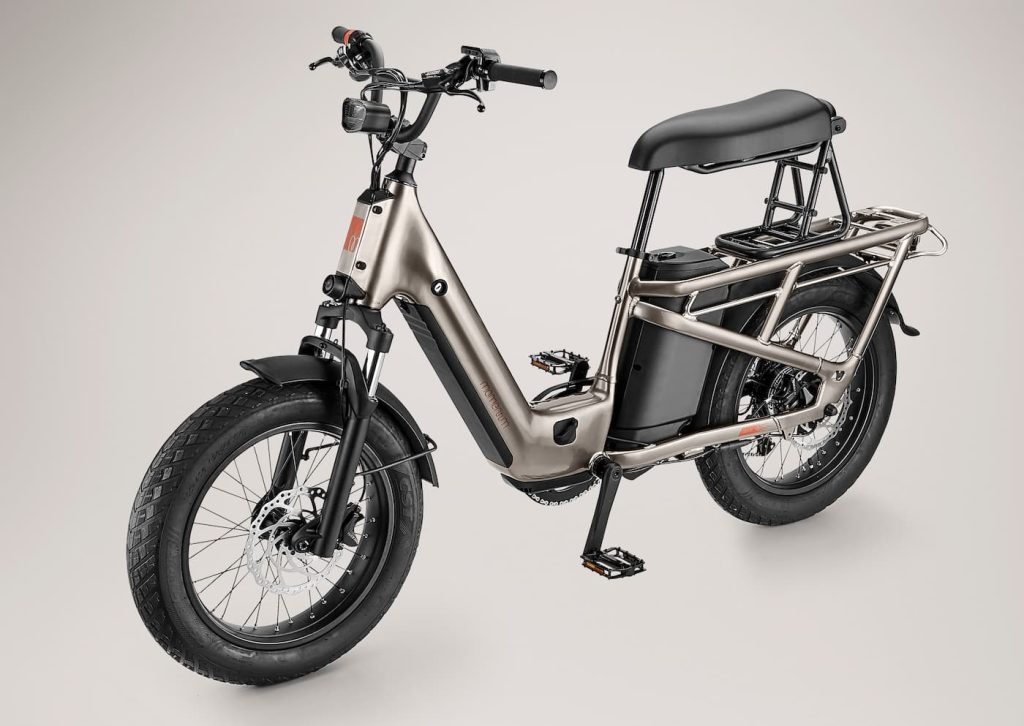
To grossly oversimplify the e-bike market in the US, there are two types of electric bikes: those with hand throttles and those without. Traditional higher-end bike shop brands have long eschewed throttle-enable electric bikes, opting instead for pedal assist designs that only provide helping motor power when the rider also pedals. On the other hand, direct-to-consumer (D2C) e-bike companies have long embraced throttle e-bikes. As D2C brands scoop up more of the growing market, traditional bicycle brands are starting to take note.
Direct-to-consumer brands usually don’t have retail shops, and instead these D2C companies mostly sell bikes online that are shipped directly to riders. Brands like these, such as Rad Power Bikes, Lectric Ebikes, Ride1Up, Aventon, and others primarily target riders who weren’t traditionally cyclists but rather have taken to two-wheels thanks to the advent of easier-to-ride electric bikes.
Without the dealership markup, these D2C electric bikes are usually significantly cheaper than bike shop prices. And because they target riders who don’t come from the traditional bike shop culture, they also have one key difference: throttles.

Throttles e-bikes outsell pedal-assist-only e-bikes by a handy margin in the US. Many riders use their throttles to climb hills without the effort of pedaling, or to get rolling more easily from a stop, especially when there’s heavy cargo or a child on the bike’s rear rack. Other riders use throttles 100% of the time, treating their pedals like footrests and riding the bike like a mini-moped to cruise effortlessly to school or work. Still others find a happy balance, throttling when tired and using pedal assist when they want to get exercise or feel like a more involved part of the ride.
Traditional bicycle brands (think big names like Giant, Trek, Specialized, Cannondale, etc.) have long avoided throttles for several reasons, though key among them has been a prevailing perception among old-school cyclists that “throttles are cheating”. But now many of these very companies have finally come to a realization that riders aren’t competing; they’re commuting. And the addition of a hand throttle on an e-bike helps accomplish the very goal of that bike: getting more people out of cars and onto efficient two-wheeled vehicles.
Of course, the fact that throttle-less electric bikes have hit those companies in their pocketbooks has likely helped drive that case home even more clearly. There are simply more e-bike customers in North America looking for lower to mid-priced electric bikes with throttles than looking at $5,000 throttle-less electric bikes, no matter how sophisticated their engineering may be.
So now many of these same brands that have avoided throttles and more moderately-priced electric bikes in general are suddenly rushing to create more affordable throttle-enabled bikes. However, to avoid alienating their traditional cyclist communities or muddying their higher-end brand names, they’re often doing so under new sub-brands.
Take Giant Group, for example. Giant has long been a quality name brand in North American bike shops, but the company’s parent Giant Group created a new brand known as Momentum to give Giant engineering and design teams the necessary freedom to break away from more traditional performance and sport product targets. This week the company launched its first throttle-enabled electric bike and is doing so under the Momentum brand. The new Momentum Cito E+ doesn’t only include a throttle but also features many of the hallmarks of today’s leading budget-priced electric bikes such as moto-inspired saddles and smaller-diameter fat tires.

The utility-oriented electric bike looks like nothing we’ve seen from Giant Group before, and that’s for a reason. The company appears to be jumping with both feet into current utility e-bikes trends.
As Giant Group’s Chief Branding Officer Phoebe Liu explained:
“The Cito E+’s impressive range and grip throttle gives riders the ability to go further than ever before—which is both energy saving and fun. Our design team purpose-built the bike to be a total utility solution that integrates motorcycle design and best-in-class technologies. Whether heading to work, getting groceries or exploring the outdoors, the Cito E+ offers a natural riding experience.”
Note the chunkier frame, lower saddle position, powerful 750W motor with 80Nm of torque, and fully upright riding stance – all features we rarely see from leading bike store brands. In fact, it looks like Giant Group took a page out of Rad Power Bikes’ playbook, notably the page with the RadRunner 3 Plus on it.
But unlike most budget brands, Momentum also brought higher quality components to the design, such as four-piston hydraulic disc brakes, a microSHIFT Acolyte 8-speed drivetrain, and combined torque and cadence sensors for smoother pedal assist. The company also included much higher performance than we normally see from bike shop brands, such as a large 780Wh battery and the ability to user-select between 20 mph and 28 mph speed limits (32 and 45 km/h).
At the same time though, Momentum tried to play it safe with the throttle, which is still new territory for the brand. Not only did they color it Poison Dart Frog red to presumably remind riders that that’s the dangerous end of the handlebars, but the throttle also only engages once the rider has reached at least 3.5 mph (5 km/h). I’d argue that removes a key benefit of the throttle – being able to get started from a stop – but at least the included torque sensor helps riders get smoother and quicker pedal assist from a stop.


This utility design is proving to be a common strategy for bike shop brands seeking to expand into the more popular and higher sales volume budget category.
Specialized made a similar move when it launched its more affordable Globe brand, starting with the Globe Haul ST as a similarly-styled short-tail cargo bike with utility properties.
In a now familiar strategy, Globe’s utility e-bike uses higher spec components than most budget brands, and most critically – it comes with a throttle.
And Specialized isn’t alone. Trek Bicycle Company also launched its first throttle-enabled electric bike, this time under its more budget-focused Electra brand. The new Electra Ponto Go! also uses the liberty granted to it when freed from its parent company’s conservative engineers to play with a moto-inspired design that generously grants riders a throttle for peak fun.

As more bike shop brands awaken to the massive money raked in by leading throttle-enabled budget electric bikes, an increasing number of similarly-styled e-bikes is all but a foregone conclusion.
That doesn’t mean Giant, Specialized, Trek, and others will stop selling $10,000 e-bikes. But their catalogs of $2,000-$3,500 e-bikes is likely to grow thicker each year.
FTC: We use income earning auto affiliate links. More.



Comments